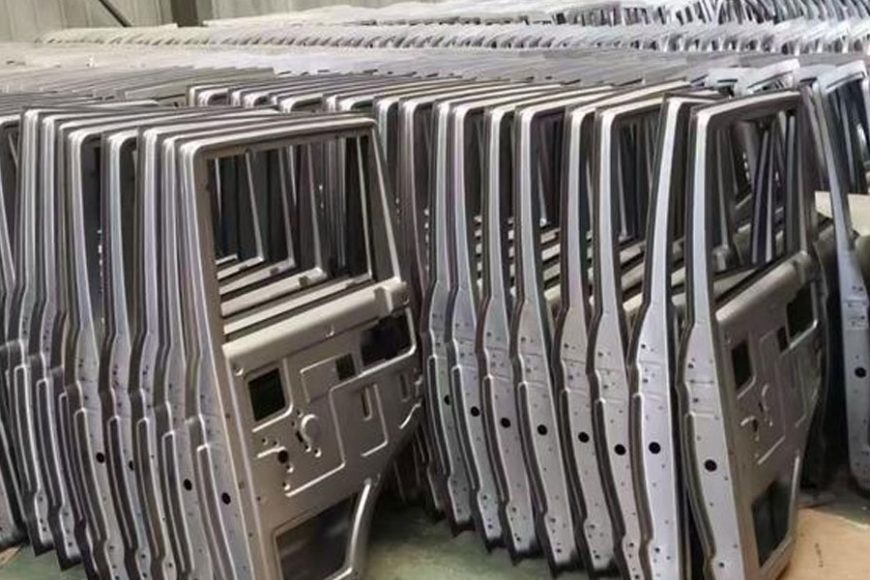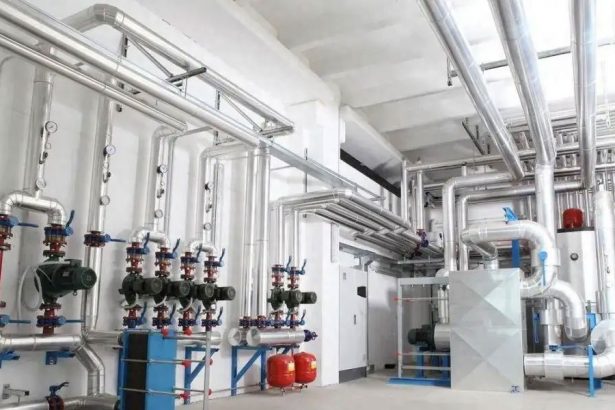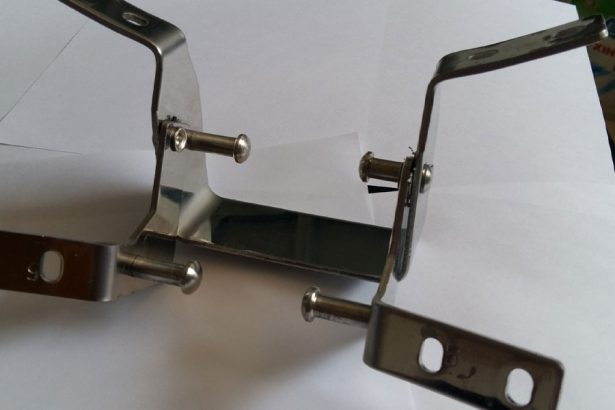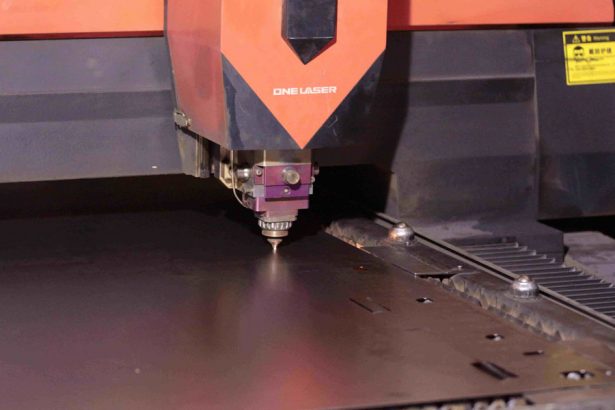Hybrid joining techniques for dissimilar sheet metal materials have emerged as critical enablers in the design and manufacture of lightweight structures, particularly in industries such as automotive, aerospace, and marine engineering. These techniques combine multiple joining methods to leverage the strengths of each, addressing the challenges posed by dissimilar material properties, such as differences in melting points, thermal conductivity, and electrochemical compatibility. Lightweight structures, often comprising advanced high-strength steels (AHSS), aluminum alloys, magnesium alloys, and composites, demand robust joining solutions to ensure structural integrity, weight reduction, and cost efficiency. This article provides a comprehensive exploration of hybrid joining techniques, their principles, applications, advantages, limitations, and future prospects, with a focus on their role in dissimilar sheet metal assemblies.
Introduction
The pursuit of lightweight structures is driven by the need to enhance fuel efficiency, reduce emissions, and improve performance in transportation systems. Dissimilar sheet metal materials, such as aluminum-to-steel or magnesium-to-aluminum combinations, are increasingly used to optimize weight and strength. However, joining these materials poses significant challenges due to their distinct physical, chemical, and mechanical properties. Traditional joining methods, such as welding or mechanical fastening, often fall short when applied to dissimilar materials, leading to issues like weak bonds, corrosion, or excessive weight. Hybrid joining techniques, which integrate two or more joining processes, have been developed to overcome these limitations. By combining methods like adhesive bonding, mechanical fastening, and welding, hybrid techniques achieve superior joint performance, enabling the widespread adoption of lightweight materials in structural applications.
This article examines the most prominent hybrid joining techniques, including adhesive bonding with mechanical fastening, laser welding with adhesive bonding, and friction stir welding with adhesive bonding, among others. It also discusses their applications, performance metrics, and the scientific principles underpinning their effectiveness. Detailed comparisons are provided through tables, highlighting key parameters such as joint strength, processing time, and suitability for specific material combinations.
Background and Motivation
Evolution of Lightweight Structures
The concept of lightweight structures has evolved significantly since the late 20th century, driven by environmental regulations and economic pressures. In the automotive industry, for instance, the Corporate Average Fuel Economy (CAFE) standards in the United States and similar regulations in Europe have incentivized the use of lightweight materials to reduce vehicle weight. Aluminum alloys, with their high strength-to-weight ratio, and magnesium alloys, which are even lighter, have become staples in vehicle body-in-white (BIW) construction. Similarly, aerospace applications rely on titanium and composite materials to achieve weight savings without compromising structural integrity.
However, the integration of dissimilar materials introduces complexities in joining. For example, aluminum and steel have different coefficients of thermal expansion, leading to residual stresses during welding. Magnesium alloys are prone to corrosion when joined with steel, necessitating protective coatings or intermediate layers. These challenges have spurred research into hybrid joining techniques that can accommodate the unique properties of each material while ensuring robust and durable joints.
Challenges in Joining Dissimilar Materials
Joining dissimilar sheet metals involves overcoming several obstacles:
- Thermal Incompatibility: Differences in melting points and thermal conductivity can result in uneven heating and cooling, leading to defects like cracks or porosity in welds.
- Electrochemical Corrosion: When dissimilar metals are in contact, galvanic corrosion can occur, particularly in the presence of moisture.
- Mechanical Property Mismatch: Variations in strength, ductility, and hardness can lead to stress concentrations at the joint interface.
- Intermetallic Compound Formation: In fusion-based processes, brittle intermetallic compounds (IMCs) may form, reducing joint strength.
- Weight and Cost Considerations: Joining methods must balance performance with the need to minimize added weight and production costs.
Hybrid joining techniques address these challenges by combining processes that mitigate the weaknesses of individual methods. For instance, adhesive bonding can reduce thermal stresses, while mechanical fastening provides immediate load-bearing capacity.
Principles of Hybrid Joining Techniques
Hybrid joining techniques integrate multiple joining processes to achieve synergistic effects. The most common combinations involve adhesive bonding, mechanical fastening, and various welding methods. Below, we explore the principles of key hybrid techniques, focusing on their mechanisms and suitability for dissimilar sheet metal materials.
Adhesive Bonding with Mechanical Fastening
This technique combines structural adhesives with mechanical fasteners, such as rivets, bolts, or clinching, to create joints that are both strong and durable. The adhesive provides a continuous bond that distributes loads evenly across the joint, reducing stress concentrations. Mechanical fasteners enhance shear and peel strength, particularly under dynamic loading conditions.
Mechanism
- Adhesive Bonding: A structural adhesive, typically epoxy, polyurethane, or acrylic-based, is applied between the sheet metal surfaces. The adhesive cures through chemical reactions or heat, forming a strong bond. The adhesive layer also acts as a barrier, reducing galvanic corrosion between dissimilar metals.
- Mechanical Fastening: Fasteners are installed through drilled holes or by deforming the sheet metal (e.g., in clinching). Rivets are commonly used due to their simplicity and effectiveness in thin sheets. The fasteners provide immediate strength, allowing the joint to bear loads before the adhesive fully cures.
Advantages
- High joint strength due to load sharing between adhesive and fasteners.
- Enhanced resistance to peel and shear forces.
- Reduced risk of galvanic corrosion due to the insulating adhesive layer.
- Flexibility in joining complex geometries.
Limitations
- Increased process complexity due to multiple steps (adhesive application, curing, and fastening).
- Potential for adhesive degradation under high temperatures or prolonged exposure to moisture.
- Higher material and labor costs compared to single-method joining.
Laser Welding with Adhesive Bonding
Laser welding combined with adhesive bonding is a hybrid technique that leverages the precision of laser welding and the load-distributing properties of adhesives. This method is particularly effective for joining aluminum to steel or other dissimilar metal pairs.
Mechanism
- Laser Welding: A focused laser beam melts the sheet metal surfaces, creating a fusion zone. The laser’s high energy density allows for precise control, minimizing the heat-affected zone (HAZ) and reducing IMC formation. Techniques like laser keyhole welding or laser brazing are often used.
- Adhesive Bonding: An adhesive layer is applied before or after welding, enhancing joint strength and sealing the weld against environmental factors. The adhesive also mitigates residual stresses caused by thermal expansion differences.
Advantages
- High joint strength and fatigue resistance.
- Minimal thermal distortion due to localized heating.
- Sealed joints that resist corrosion and environmental degradation.
- Suitable for high-speed, automated production.
Limitations
- High equipment costs for laser systems.
- Sensitivity to surface preparation and adhesive compatibility.
- Limited applicability to thick sheets due to laser penetration constraints.
Friction Stir Welding with Adhesive Bonding
Friction stir welding (FSW) combined with adhesive bonding is a solid-state joining technique that avoids melting the base materials, making it ideal for dissimilar metals with significant thermal property differences, such as aluminum and magnesium.
Mechanism
- Friction Stir Welding: A rotating tool generates frictional heat, softening the sheet metal without melting it. The tool’s shoulder and pin mix the softened material, creating a metallurgical bond. FSW produces minimal IMCs, as it operates below the melting points of the materials.
- Adhesive Bonding: An adhesive layer is applied to enhance joint strength and provide a corrosion barrier. The adhesive also improves fatigue performance by damping vibrations.
Advantages
- Low heat input, reducing thermal distortion and IMC formation.
- Strong, ductile joints with excellent fatigue properties.
- Environmentally friendly, as it requires no consumables or shielding gases.
- Effective for joining dissimilar metals with large melting point differences.
Limitations
- Slow processing speeds compared to fusion-based methods.
- Limited to relatively simple joint geometries due to tool access requirements.
- High initial investment in FSW equipment.
Other Hybrid Techniques
Several other hybrid joining techniques are used for dissimilar sheet metals, including:
- Resistance Spot Welding with Adhesive Bonding: Combines resistance spot welding’s speed with adhesive bonding’s load distribution. Suitable for automotive body panels.
- Ultrasonic Welding with Mechanical Fastening: Uses ultrasonic vibrations to create solid-state bonds, supplemented by fasteners for added strength. Ideal for thin sheets and delicate materials.
- Flow Drill Screwing with Adhesive Bonding: Involves a self-piercing screw that forms a threaded connection, enhanced by an adhesive layer. Effective for high-strength joints in automotive applications.
Applications in Lightweight Structures
Hybrid joining techniques are widely used in industries where lightweight structures are critical. Below, we explore their applications in key sectors, highlighting specific use cases and material combinations.
Automotive Industry
The automotive industry is a primary adopter of hybrid joining techniques, driven by the need to reduce vehicle weight while maintaining crashworthiness. Common material combinations include:
- Aluminum to Steel: Used in BIW components like door panels and chassis frames. Hybrid techniques like adhesive bonding with self-piercing rivets (SPR) or laser welding with adhesives ensure strong, corrosion-resistant joints.
- Magnesium to Aluminum: Found in lightweight engine cradles and transmission housings. FSW with adhesive bonding is preferred due to its low heat input and corrosion resistance.
- Steel to Composites: Increasingly used in electric vehicle (EV) battery enclosures. Adhesive bonding with mechanical fasteners provides robust joints without compromising composite integrity.
Case Study: Aluminum-Steel BIW
In modern vehicles, aluminum roof panels are often joined to steel side frames using adhesive bonding with SPR. The adhesive distributes loads across the joint, while rivets provide immediate strength during assembly. This combination reduces weight by up to 20% compared to all-steel structures, improving fuel efficiency.
Aerospace Industry
Aerospace applications demand high-performance joints that withstand extreme temperatures, vibrations, and fatigue. Hybrid joining techniques are used in:
- Aluminum to Titanium: Found in aircraft fuselage and wing structures. Laser welding with adhesive bonding ensures precise, lightweight joints with minimal thermal distortion.
- Aluminum to Composites: Used in wing skins and interior panels. Adhesive bonding with mechanical fasteners provides strong, durable joints that accommodate the flexibility of composites.
Case Study: Composite Wing Assembly
In the Boeing 787 Dreamliner, aluminum stringers are joined to composite wing skins using adhesive bonding with titanium bolts. The adhesive reduces stress concentrations, while bolts ensure structural integrity under high aerodynamic loads.
Marine and Rail Industries
Marine and rail applications require joints that resist corrosion and fatigue in harsh environments. Hybrid techniques are used in:
- Aluminum to Stainless Steel: Common in ship hulls and railcar frames. Adhesive bonding with clinching provides corrosion-resistant, lightweight joints.
- Magnesium to Aluminum: Used in lightweight railcar interiors. FSW with adhesives ensures strong, vibration-resistant joints.
Performance Metrics and Comparison
To evaluate the effectiveness of hybrid joining techniques, several performance metrics are considered, including joint strength, fatigue life, corrosion resistance, and processing time. The following tables provide detailed comparisons of key hybrid techniques for dissimilar sheet metal materials.
Table 1: Comparison of Hybrid Joining Techniques
| Technique | Material Combinations | Joint Strength (MPa) | Fatigue Life (Cycles) | Corrosion Resistance | Processing Time (s) | Cost (Relative) |
|---|---|---|---|---|---|---|
| Adhesive Bonding + SPR | Al-Steel, Mg-Al | 50-100 | 10^6-10^7 | High (Adhesive Barrier) | 10-30 | Moderate |
| Laser Welding + Adhesive Bonding | Al-Steel, Al-Ti | 80-150 | 10^7-10^8 | High (Sealed Joint) | 5-15 | High |
| FSW + Adhesive Bonding | Al-Mg, Al-Al | 60-120 | 10^7-10^8 | High (Low Heat Input) | 20-60 | High |
| Resistance Spot Welding + Adhesive | Al-Steel, Steel-Steel | 40-90 | 10^6-10^7 | Moderate | 5-20 | Low |
| Ultrasonic Welding + Mechanical | Al-Al, Al-Composites | 30-80 | 10^5-10^6 | Moderate | 5-10 | Moderate |
| Flow Drill Screwing + Adhesive | Al-Steel, Mg-Al | 50-110 | 10^6-10^7 | High (Adhesive Barrier) | 10-25 | Moderate |
Notes:
- Joint strength varies based on material thickness and adhesive type.
- Fatigue life is measured under cyclic loading at 50% of ultimate tensile strength.
- Corrosion resistance is assessed in salt spray tests per ASTM B117.
- Processing time includes setup, joining, and curing (if applicable).
- Cost is relative to resistance spot welding (baseline = Low).
Table 2: Suitability for Material Combinations
| Material Pair | Adhesive + SPR | Laser + Adhesive | FSW + Adhesive | Resistance Spot + Adhesive | Ultrasonic + Mechanical | Flow Drill + Adhesive |
|---|---|---|---|---|---|---|
| Aluminum-Steel | Excellent | Excellent | Good | Good | Moderate | Excellent |
| Aluminum-Magnesium | Good | Moderate | Excellent | Poor | Good | Good |
| Aluminum-Titanium | Moderate | Excellent | Good | Poor | Moderate | Moderate |
| Steel-Composites | Excellent | Poor | Poor | Poor | Good | Good |
| Aluminum-Composites | Excellent | Poor | Poor | Poor | Excellent | Moderate |
Notes:
- “Excellent” indicates optimal performance in strength, durability, and ease of processing.
- “Poor” indicates significant limitations, such as weak bonds or processing challenges.
Advantages and Limitations
Advantages
- Enhanced Joint Performance: Hybrid techniques combine the strengths of individual methods, resulting in joints with superior strength, fatigue resistance, and durability.
- Flexibility: Suitable for a wide range of material combinations and joint geometries.
- Corrosion Mitigation: Adhesive layers and sealed joints reduce galvanic corrosion, extending service life.
- Weight Optimization: Lightweight joining methods align with the goals of lightweight structures.
- Automation Compatibility: Many hybrid techniques, such as laser welding and SPR, are easily automated, improving production efficiency.
Limitations
- Process Complexity: Multiple steps increase production time and require specialized equipment.
- Cost: High initial investment in equipment (e.g., laser systems, FSW tools) and materials (e.g., structural adhesives) can be prohibitive.
- Surface Preparation: Adhesive bonding requires clean, properly prepared surfaces, adding to process time.
- Environmental Sensitivity: Adhesives may degrade under extreme temperatures, UV exposure, or moisture, limiting their use in certain applications.
- Joint Inspection Challenges: Non-destructive testing (NDT) of hybrid joints is complex due to the combination of materials and methods.
Future Prospects and Research Directions
The future of hybrid joining techniques lies in addressing current limitations and expanding their applicability. Key research directions include:
- Advanced Adhesives: Developing adhesives with improved thermal stability, moisture resistance, and curing speeds to enhance hybrid joint performance.
- Process Optimization: Integrating artificial intelligence (AI) and machine learning to optimize process parameters, such as laser power or FSW tool speed, for specific material combinations.
- Sustainability: Exploring eco-friendly adhesives and joining methods that reduce energy consumption and waste.
- Multi-Material Joining: Expanding hybrid techniques to include emerging materials, such as high-entropy alloys and advanced composites.
- Non-Destructive Testing: Developing reliable NDT methods, such as ultrasonic imaging or X-ray computed tomography, for hybrid joints.
Emerging Techniques
- Hybrid Additive Manufacturing: Combining additive manufacturing with hybrid joining to create complex, lightweight structures with integrated joints.
- Smart Joints: Incorporating sensors into hybrid joints to monitor stress, corrosion, or degradation in real time.
- Nano-Enhanced Adhesives: Using nanomaterials to improve adhesive strength and durability.
Conclusion
Hybrid joining techniques for dissimilar sheet metal materials are pivotal in the advancement of lightweight structures. By combining the strengths of adhesive bonding, mechanical fastening, and welding, these techniques overcome the challenges of joining materials with disparate properties. Their applications in automotive, aerospace, and marine industries demonstrate their versatility and effectiveness. While challenges such as process complexity and cost remain, ongoing research and technological advancements promise to enhance their performance and accessibility. As lightweight structures continue to shape the future of transportation and engineering, hybrid joining techniques will play an increasingly vital role in enabling innovative, efficient, and sustainable designs.




